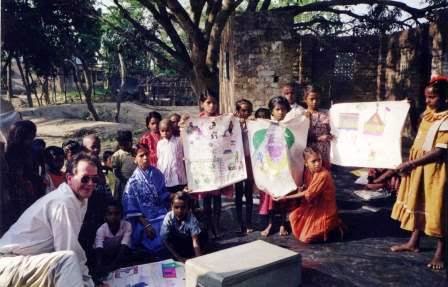Dalla is a small village in the Habibpur block of Maldah district in West Bengal. The village is about 42 kilometres away from Maldah town. It is one of the 291 villages in Habibpur block, which is mainly
inhabited by the Santhal tribe community. The block has almost three sides
surrounded by the international border of Bangladesh. Among its total
population, about one third of Habibpur block has Santhal tribe. The literacy
rate of this block is very low and most of them are landless agricultural
labour.
Now, we will take you back to the late 90s, when SEED
(Society for Socio Economic and Ecological Development) came to know about the
plight of these Santhal tribes of Dalla village. The village is situated near
Punarbhava River close to the Bangladesh border in Maldah. In 1997, when SEED
entered the village, it noticed that most of the tribal kids were school drop
outs and the main reason was annual occurrence of flood in this area. The
Santhal tribe people of Dalla village were mainly dependent on agricultural labour
work. The red soil of this area produces a variety of rabi crops including
winter rice. But, during the rainy season, the Punarbhava River used to get
flooded and the homes of the villagers would go almost under water. The poor
people had no other option but to move out of the village and get temporary shelter
in districts like Bardhhaman and Hooghly. They would temporarily work as agricultural
labour with a minimal income. For these few months, they could not send their
kids to a new school.That meant their children had to miss their school for
months, which was not acceptable to school authorities. They were not allowed
to admit in school after 6 months of hiatus. As a result, their formal
education was in stake and their future was in dark like their parents.
With an aim to offer basic education to these children, SEED
started four short term non-formal education centres. During the dry season,
these schools used to teach about 150 children for six months. They were also trained in painting, singing and dancing.
 |
| Santhal children showing their drawing at one of the 4 non-formal schools |
Thus, they were
not missing education even though they could not go to full time formal
schools. An NGO named ‘Maldah Sanskriti O Samaj Unnayan Parishad’ extended its
support in this noble cause and thus the intervention continued for the next
three years till 1999. Lots of children were benefited and mainstreamed through
these education centres and they could also explore the world like other
children of their age.

No comments:
Post a Comment